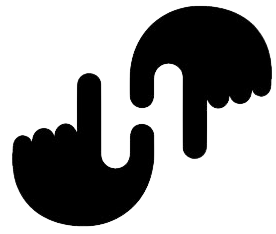How many transistors are in a DFF?
They implemented a DFF with only 6 MOS transistors. This proposed circuit is verified by HSpice, and is implemented with 0.8 /spl mu/m CMOS technology. The proposed DFF operates up to 6.4 GHz at 5 V.
How does a DFF work?
A DFF records (or registers) new data whenever an active clock edge occurs; the active edge can be either the rising edge or the falling edge. The clock signal is typically a regular, repeating square wave that continuously causes the DFF to memorize its data input signal at some frequency.
What is DFF in VLSI?
Latch is an electronic device that can be used to store one bit of information. When the CLK input falls to logic 0, the last state of the D input is trapped and held in the latch. …
What do you mean by flip-flop?
A flip-flop is a device which stores a single bit (binary digit) of data; one of its two states represents a “one” and the other represents a “zero”. Such data storage can be used for storage of state, and such a circuit is described as sequential logic in electronics.
What are the types of CMOS?
CMOS Logic Structures
- Other forms of CMOS logic include:
- BiCMOS Logic.
- Clocked CMOS Logic (C 2 MOS).
- NP Domino Logic (Zipper CMOS).
- Cascade Voltage Switch Logic (CVSL).
- Source Follower Pull-up Logic (SFPL).
- (See Weste and Eshraghian for details.)
Why clock is used in flip-flop?
To avoid this an additional input called the “CLOCK” or “ENABLE” input is used to isolate the data input from the flip flop’s latching circuitry after the desired data has been stored. The effect is that D input condition is only copied to the output Q when the clock input is active.
What is the difference between D and T flip-flop?
D Flip-Flop: When the clock triggers, the value remembered by the flip-flop becomes the value of the D input (Data) at that instant. T Flip-Flop: When the clock triggers, the value remembered by the flip-flop either toggles or remains the same depending on whether the T input (Toggle) is 1 or 0.
What is difference between latch and flip flop?
Flip-flop is a bistable device i.e., it has two stable states that are represented as 0 and 1. Latch is also a bistable device whose states are also represented as 0 and 1. It checks the inputs but changes the output only at times defined by the clock signal or any other control signal.
Why is it called flip-flop?
All you need to do to figure out why we call them “flip-flops” is to walk around in a pair of them for just a little while. Because of how they’re made, the rubber soles slap against the bottom of your feet as you walk, making a flip-flop, flip-flop sound. The name “flip-flop” is thus an example of onomatopoeia.
Where is flip-flop used?
Flip flops are essential in data storage. They are electronic circuits with two stable states used to store binary data. Such a circuit has one or more control inputs and one or two outputs. By applying varying input, the data stored can be changed.
